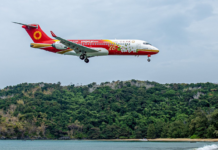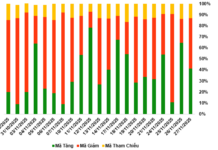The Civil Aviation Authority of Vietnam (CAAV) has submitted to the Ministry of Construction an adjusted master plan for the development of the national airport system for the period 2021-2030, with a vision to 2050.
The plan proposes that by 2030, Vietnam will have 33 airports with a capacity of 297 million passengers; by 2050, this number is expected to rise to 36 airports, serving nearly 540 million passengers annually.
To accommodate this expansion, the total land area allocated for airports will increase to over 26,600 hectares by 2030 and reach approximately 27,800 hectares by 2050.
The estimated capital requirement for developing the airport system by 2030 is nearly VND 500 trillion, sourced from the state budget, non-state funds, and other legal sources.
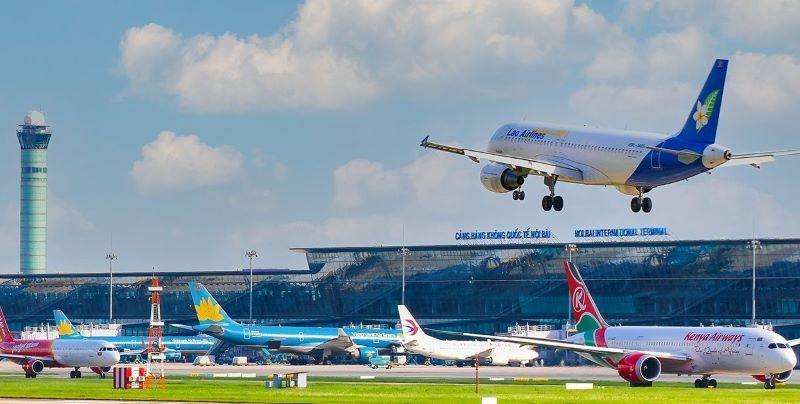
By 2050, Vietnam will have 36 airports. Photo: NIA.
The CAAV also proposes the inclusion of Mang Den Airport in Kon Tum (currently in Quang Ngai) and Van Phong Airport in Khanh Hoa into the master plan for the national airport system development for the period 2021-2030, with a vision to 2050.
According to the authority, the inclusion of Mang Den and Van Phong airports is based on approved development directions from the government.
Specifically, the regional planning for the North Central and Central Coastal regions identifies Khanh Hoa as a growth pole, aiming to develop Van Phong into a regional logistics and service hub. Meanwhile, the Central Highlands regional plan positions Mang Den as a national tourism site, requiring efficient infrastructure connectivity with the Central Coastal region, including the consideration of airport investment.
At the local level, these directions are clearly reflected in Khanh Hoa’s allocation of land for the Van Phong airport project, and in Kon Tum’s provincial plan and the Mang Den tourism area plan, which both view Mang Den Airport as a key infrastructure project. The subsequent adjustment of the Van Phong Economic Zone’s master plan further emphasizes the role of an airport in establishing a modern maritime economic center.
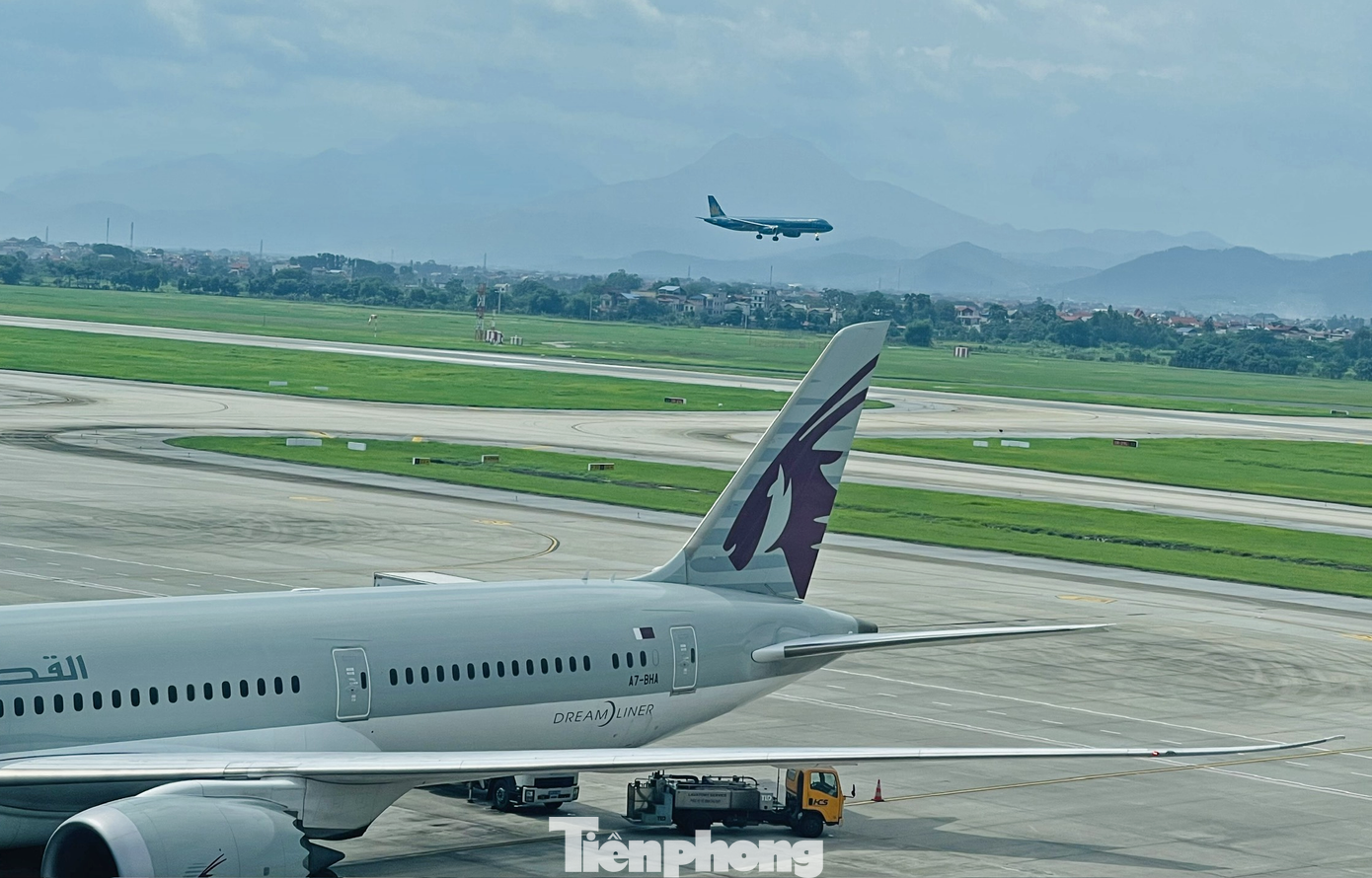
The CAAV proposes adding Mang Den and Van Phong airports to the national airport plan for 2021-2030, with a vision to 2050.
Two feasibility studies for Mang Den and Van Phong airports have been appraised by the Ministry of Construction and endorsed by Deputy Prime Minister Tran Hong Ha for inclusion in the national plan. The CAAV considers this a necessary step, aligning with development directions from central to local levels, while also opening opportunities for private investment, tourism and logistics development, and enhanced regional connectivity, defense, and security in the South Central and Central Highlands regions.
In the dossier submitted to the Ministry of Construction, the CAAV clarifies the scale of the two projects: Mang Den Airport is planned to meet 4C standards, with a total investment of approximately VND 5 trillion and an area of over 350 hectares; Van Phong Airport will meet 4E standards, with an investment of over VND 9.2 trillion and an area of nearly 500 hectares.
In addition to adding new airports, the CAAV also proposes upgrading Quang Tri Airport from 4C to 4E. This proposal is based on the province’s strategic location on the East-West Economic Corridor, connecting Quang Tri – Salavan (Laos) – Ubon Ratchathani (Thailand), and the new development needs following its merger with Quang Binh province.
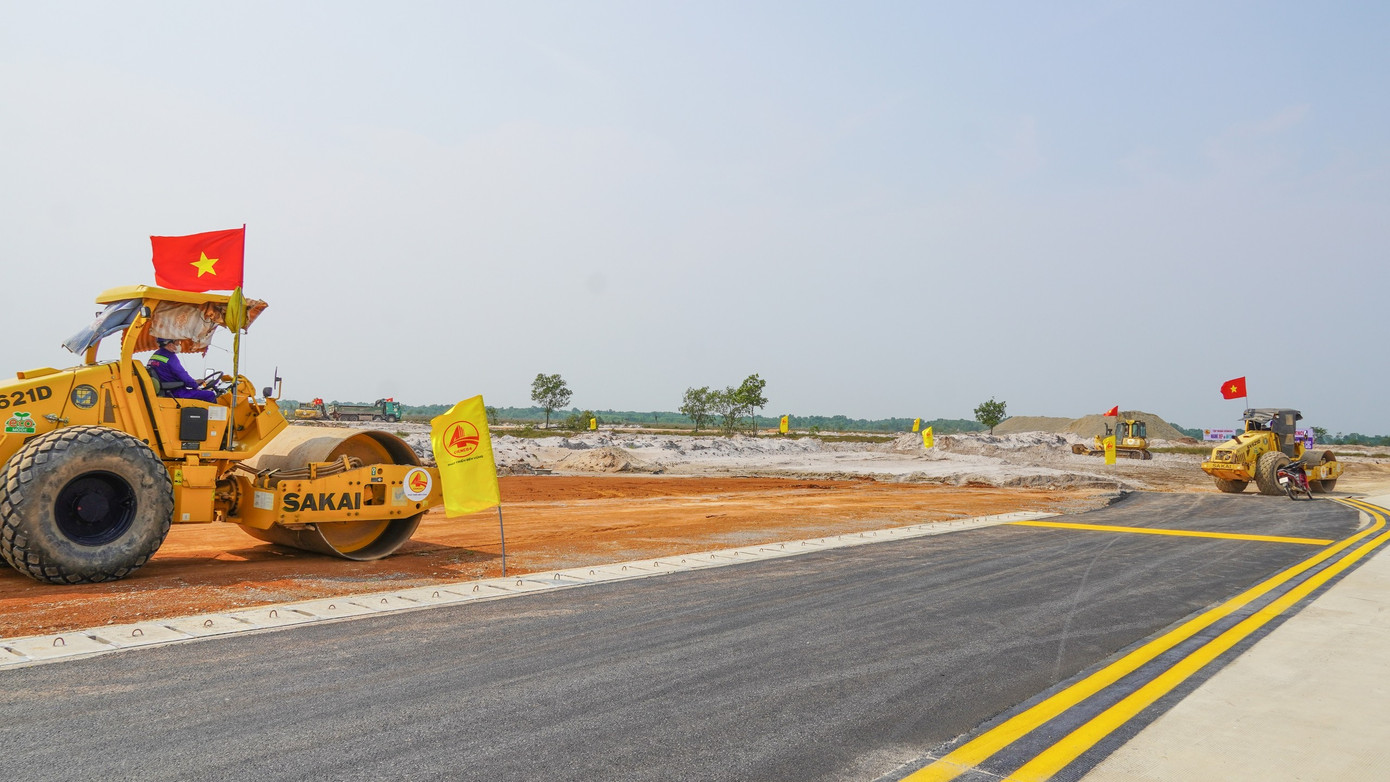
Contractors are currently working at Quang Tri Airport. Photo: BXD.
The provincial plan identifies Quang Tri as a logistics and transshipment hub for the North Central and Central Coastal regions, playing a crucial role in the multimodal logistics chain. Upgrading to 4E, according to the aviation authority, will attract airlines, logistics companies, and international MRO groups, enable international flights, and solidify the province’s position as a regional logistics and industrial center.
Investing in the Development of Gia Bình International Airport to Meet Global Standards
Continuing the agenda of the 10th Session, this morning (November 14), the National Assembly heard a report on the investment policy for the Gia Binh International Airport Construction Project.





